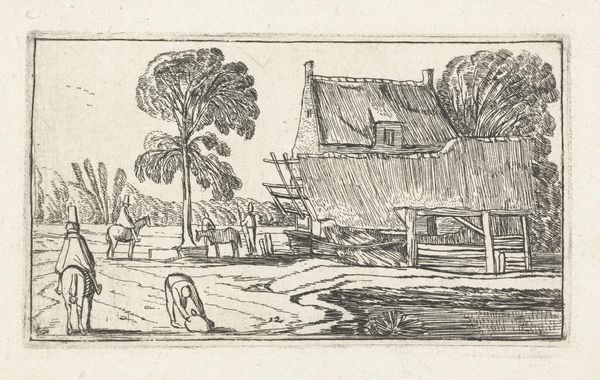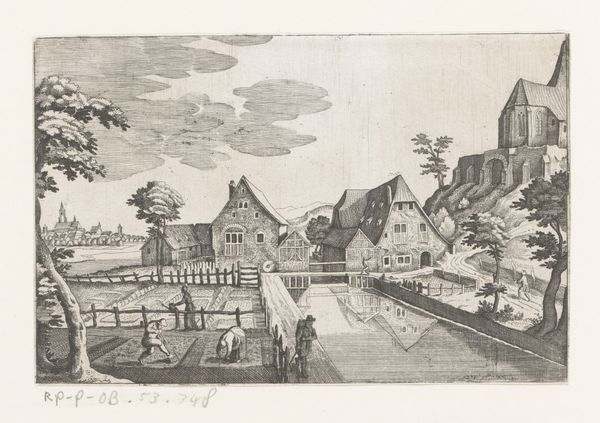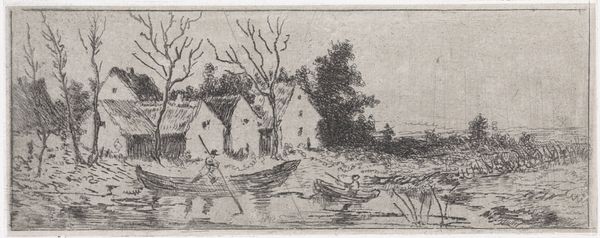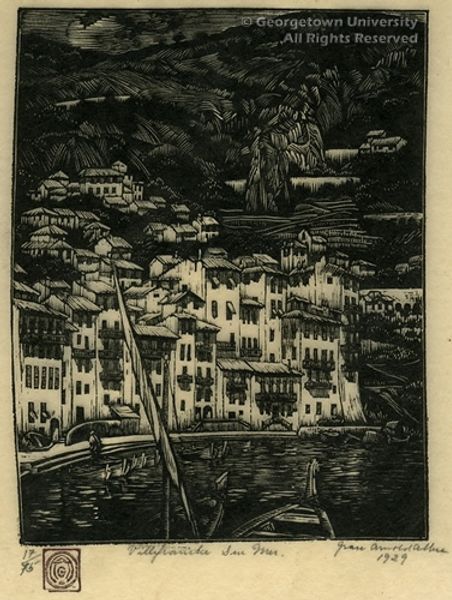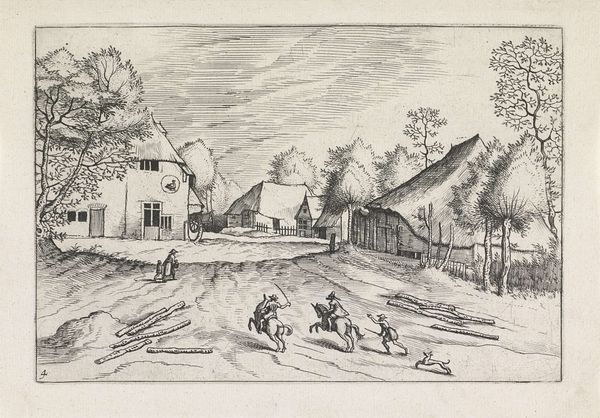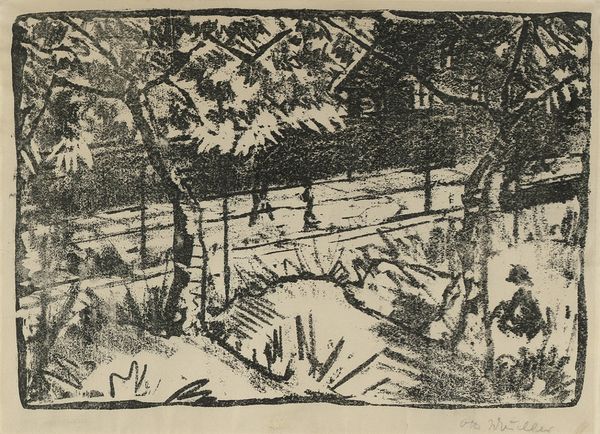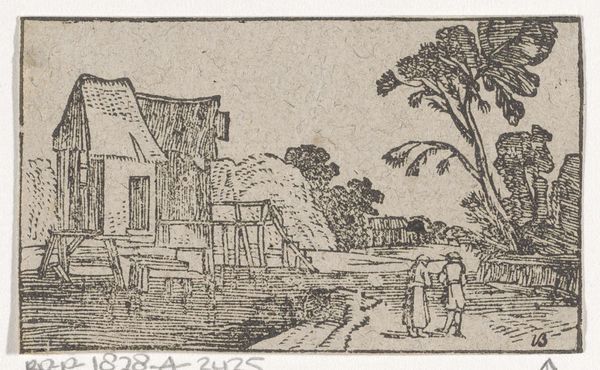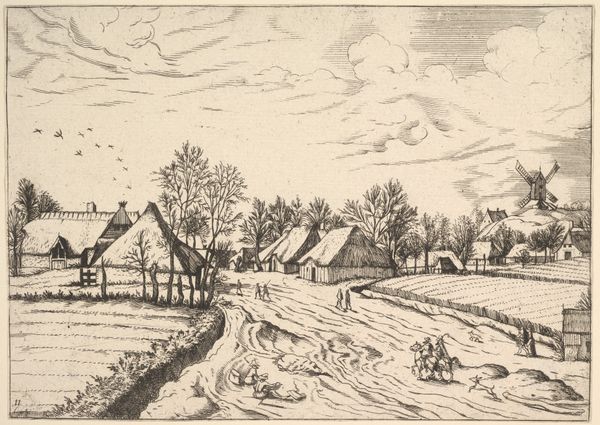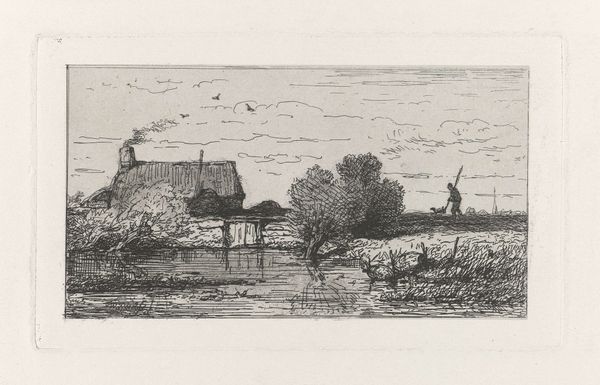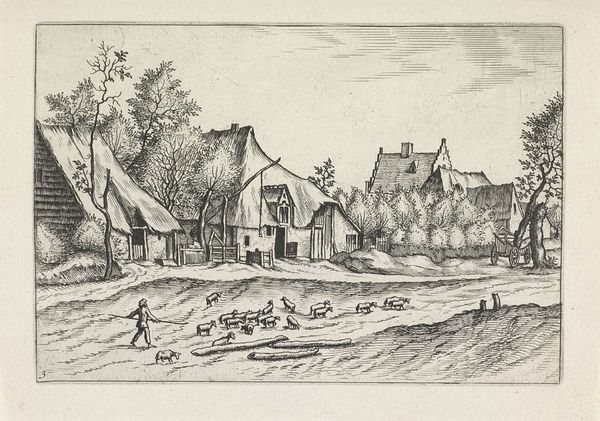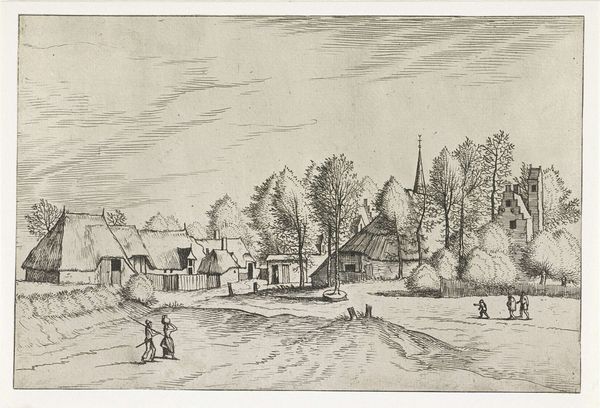
drawing, print, woodcut
#
drawing
#
pen drawing
# print
#
landscape
#
woodcut
#
line
Dimensions: image: 3.81 × 5.08 cm (1 1/2 × 2 in.) sheet: 4.76 × 5.87 cm (1 7/8 × 2 5/16 in.) support: 11.59 × 9.21 cm (4 9/16 × 3 5/8 in.)
Copyright: National Gallery of Art: CC0 1.0
Editor: This is "The Quay: Dalmatian Village," a 1927 woodcut by Clare Leighton. There’s such a strong contrast between light and shadow that really gives the village a crisp, immediate presence. What stands out to you? Curator: The visual language of woodcuts speaks volumes about the era. Consider its proliferation in socially conscious art during the interwar period. Printmaking made art affordable and accessible. What stories does Leighton's scene tell, not just of a village, but of the societal role art played then? Editor: I guess it feels different knowing it was meant to be widely distributed. I focused more on the aesthetic…the way the light falls on the buildings, and the texture. Did she choose woodcut specifically for its accessibility, or were there other artistic considerations? Curator: Likely both. The bold lines, dictated by the medium, allow for impactful imagery. But her subject matter also points to a democratization of art. Leighton’s interest in everyday life, particularly labor, positioned her within a broader movement of artists engaging with the realities of working-class existence and rural life. Notice how the figures are presented; do they seem idealized or realistically portrayed? Editor: Realistically, I think. They look like they are just working or talking and there are no overly grand elements. Thinking about the wider reach through printing, what effect do you think that had on ordinary people? Curator: It offered validation and visibility, potentially fostering a sense of collective identity. Art became less about elite patronage and more about reflecting the lives of ordinary people back to themselves. Does viewing it through this lens alter your initial perspective? Editor: It really does. I hadn't considered how art like this could function as social commentary. Now, it feels more like a powerful snapshot of a time. Curator: Precisely! And that’s the power of contextualizing art. It transforms aesthetic appreciation into a deeper understanding of culture and society.
Comments
No comments
Be the first to comment and join the conversation on the ultimate creative platform.
